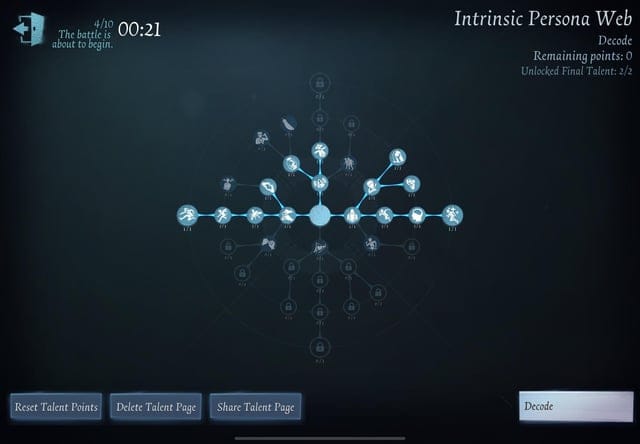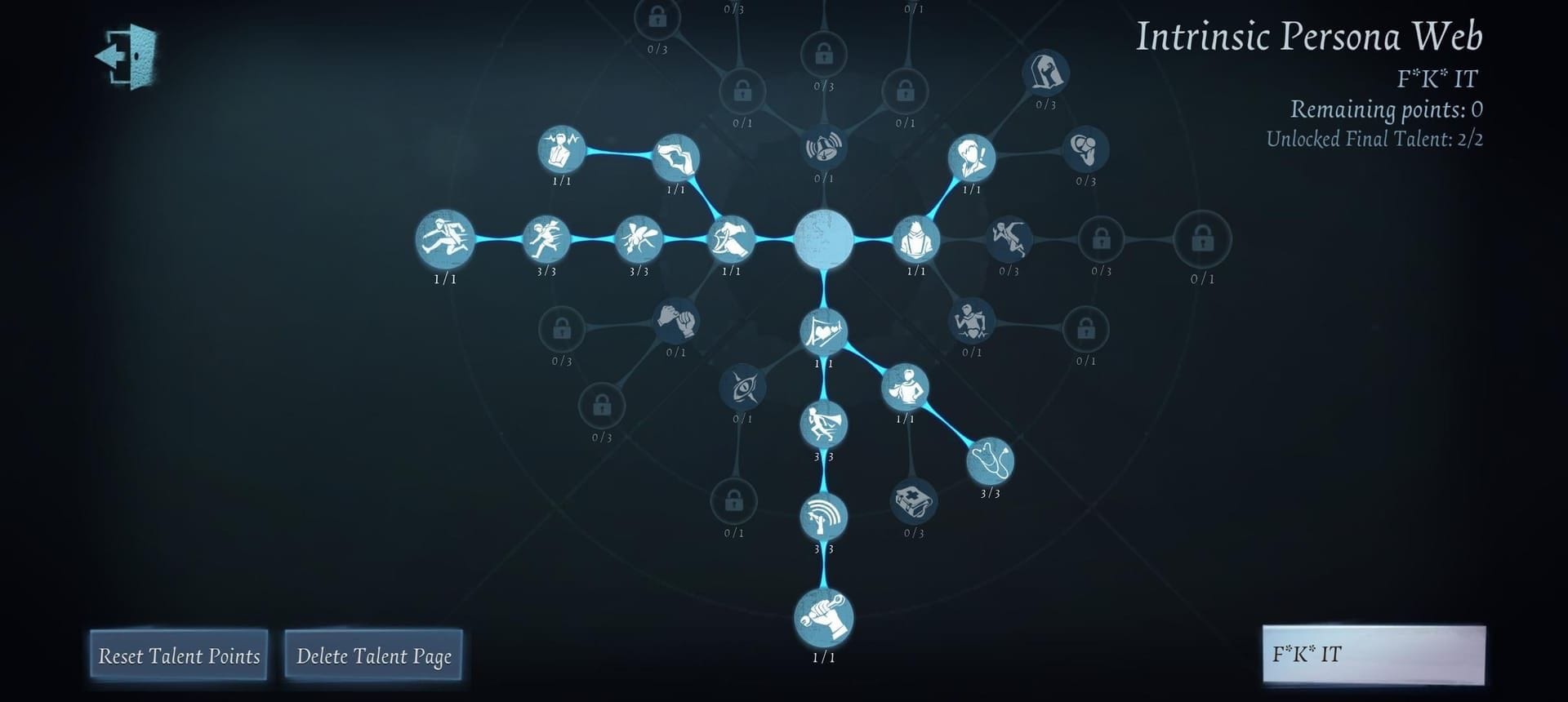Identity V Hunter Persona Guide: 130 Points Meta Builds 2025
Buffget
2025/11/04
Master Identity V's hunter persona system with comprehensive builds for all 130 talent points. This guide covers the complete 36/39/129 meta, featuring optimal talent allocations across Tough, Vigilance, Dread, and Deceit directions. Learn character-specific builds, counter-strategies, and the latest 2025 updates including new talents like Famine and Overwhelm for competitive dominance.
Understanding Identity V Persona System Fundamentals
Let's be honest—the persona system in Identity V can feel overwhelming at first glance. That clock-face web with all its interconnected nodes? Yeah, I've seen plenty of players stare at it like it's written in ancient hieroglyphics.
Persona Point Allocation Basics
Here's the deal: the system operates on four cardinal directions that actually make sense once you get the hang of it. Tough sits at the North (think defensive tank), Vigilance holds down the East (your pursuit specialist), Dread lurks in the West (fear and debuffs), and Deceit owns the South (trickery and eliminations).

The catch? You can only activate two Final Talents per match. This isn't some arbitrary limitation—it forces strategic thinking that separates casual players from ranked climbers.
As of June 19, 2025, hunters get 130 Talent Points maximum. That's up from 120, and trust me, those extra 10 points matter more than you'd think. The update added four game-changing nodes: Obsession, Vigilance, Famine, and Overwhelm. (More on why Famine is absolutely broken in the right hands later.)
Match Points fuel your progression—victories give you that sweet 2.6x multiplier, draws offer 2.3x. Each behavior needs 3,000 Match Points to max out, unlocking in 5-point chunks. Pro tip: the system lets you save 10 configurations per faction, so use them. Map adaptation isn't optional in high-tier play.
36/39/129 Meta Explanation
Okay, this notation trips up newcomers constantly. Think clock positions—'36' means you're combining 3 o'clock and 6 o'clock talents, '39' merges 3 o'clock with 9 o'clock paths, and '129' incorporates 12, 3, and 9 o'clock positions.

Strategic combinations that actually work? Confined Space (Tough) + Trump Card (Vigilance) gives you space control with pursuit power. Or go nuclear with Insolence (Dread) + Detention (Deceit) for debuff application and elimination pressure that makes survivors sweat.
When you're experimenting with different builds and need resources, Identity V recharge Echoes through buffget offers competitive pricing and instant delivery. Their secure payment system and 24/7 support make it perfect for players who want to test builds without grinding for weeks. (Trust me, I've been there.)
Talent Tree Navigation
Each direction serves specific archetypes, and understanding this is crucial. Tough emphasizes durability and space control—think Deteriorate, Wither, Confined Space. Vigilance focuses on detection and pursuit with Constrain, Announcement, Trump Card. Dread induces fear and slowdowns through Deer Hunt, Claustrophobia, Insolence. Deceit specializes in trickery and eliminations via Inertia, Mock, Detention.
The 2025 updates seriously enhanced anti-healing capabilities. Street Sweeper now reveals healing survivors within 24-32m while cranking up healing time by 25-55%. Aftereffects reduces incapacitated survivors' self-healing by 10-30% and decreases healing speed by 8-16%.
Overwhelm? That's the snowball talent everyone's talking about. Progressive attack recovery bonuses (+5%/10%/15%) after multiple knockdowns. In the right hands, it's terrifying.
Meta Analysis: Current Hunter Persona Landscape
2025 Meta Trends
Current meta heavily favors early-game pressure builds, and Famine talent is the star of the show. Six percent decoding speed reduction for all survivors during the first 60 seconds when no survivors are within 18m? That's massive pressure right out the gate.

This synergizes beautifully with S-tier hunters like The Peddler, Night Watch, and Dream Witch. Map control and isolation tactics have never been stronger. (Personal observation: I've watched too many survivor teams crumble under this early pressure to count.)
Vigilance direction gained serious prominence with the new Vigilance talent—+6% movement speed for 10 seconds and +15% pallet-destroying speed after the first three cipher activations. The anti-healing meta intensified through Giant Claw, reducing ballooned survivors' struggle speed by 5-15% and applying decoding debuffs for 10 seconds after rescues.
Professional Scene Influence
Here's what separates pros from wannabes: versatile builds over rigid specialization. Master-rank gameplay assumes strong anti-escape capabilities, focusing on coordination counters rather than individual pursuit mechanics.
Addiction provides 10-40% stun recovery bonuses when 2-4 free survivors are within 24m, plus area slowdown effects on a 20-second cooldown. It's not flashy, but it wins games.
Win rates directly correlate with synergy between persona builds and hunter abilities. Dream Witch players maximize minion effectiveness through detection talents, while Guard 26 users leverage bomb mechanics with movement speed enhancements. Simple concept, complex execution.
Essential Hunter Persona Builds by Category
Control Hunters
Control hunters—Mad Eyes, Feaster, Guard 26—thrive with Tough and Dread combinations. Optimal builds allocate 60-70 points toward Confined Space for enclosed area control, with remaining points in Claustrophobia and Tolerance for exit gate delays and knockback reduction.

For Identity V top up card purchases, buffget provides instant delivery and competitive rates. Control hunter players need access to premium characters without delays, and their secure transactions plus excellent reviews make them the go-to choice for serious players.
Claustrophobia slows exit gate opening by 70% with 4 active survivors or 15% with 3 active survivors within 20 seconds. Combined with Tolerance's knockback reduction (12-32%) and slowing effects (12-24%), control hunters maintain pressure against even coordinated rescues.
Overwhelm creates snowball potential with cumulative attack recovery bonuses. Once you get rolling, survivors can't keep up.
Chase Hunters
Pursuit specialists like Night Watch, Violinist, Evil Reptilian need Vigilance and Deceit builds that maximize movement speed and detection. Trump Card serves as your primary Final Talent for enhanced chase efficiency.
Hunt provides +10% movement and vaulting speed after 7-11 seconds of pursuit, persisting until pursuit failure. Obsession grants +6% movement speed for 15 seconds when no survivors are within 16m ahead after ending pursuit. Detection talents like Announcement and Hunter's Instinct provide information advantages, compensating for weaker map control abilities.
The key? Don't overthink it. These hunters excel at what they do—lean into it.
Camp Hunters
Camping specialists—Photographer, Soul Weaver, Axe Boy—excel with Dread and Deceit combinations. Detention serves as your primary Final Talent for elimination lockdown. Insolence applies debuffs after interactions like rescues.
No Survivors provides +10% attack recovery per free survivor within 25m of downed survivors, stacking three times. Enhanced Aftereffects reduces incapacitated survivors' self-healing by 10-30% and healing speed by 8-16%, forcing riskier rescue scenarios or extended healing times.
Hybrid Hunters
Versatile hunters like Wu Chang, Bloody Queen, Disciple benefit from balanced builds combining Trump Card with Insolence or Confined Space. Hybrid builds allocate 40-50 points to each direction, and the 130-point cap allows comprehensive builds without sacrificing core functionality.
Addiction provides crowd control in multi-survivor scenarios with 24m range and distance-based slowdown (10-20%). Control Freak offers +10% movement speed for 3 seconds after height drops with a 10-second cooldown.
Character-Specific Persona Optimization
Top-Tier Hunter Builds
The Peddler benefits from Vigilance and Tough combinations using Trump Card for pursuits while incorporating Famine for early decoding pressure. Allocate 70 points to Vigilance for detection/pursuit, 60 points in Tough for durability/space control.

Dream Witch prioritizes Addiction and Hunter's Instinct for minion coordination and multi-survivor scenarios. Those crowd control bonuses (10-40% stun recovery) synergize perfectly with simultaneous survivor engagement. Night Watch excels with Hunt and Vigilance for movement speed bonuses in extended pursuits.
Sculptor emphasizes Overwhelm and Tolerance for attack recovery and knockback reduction. Progressive bonuses (+5%/10%/15% attack recovery after knockdowns) create snowball potential that matches her area control capabilities.
Mid-Tier Adaptations
Goatman benefits from Deceit and Dread combinations using Detention for elimination pressure while incorporating Claustrophobia for exit gate control. Opera Singer focuses on Vigilance and Tough builds maximizing detection while maintaining durability.
Wu Chang builds had to adapt to recent nerfs—emphasizing No Survivors and Control Freak for positioning advantages helps. That +10% attack recovery per nearby free survivor compensates for reduced teleport effectiveness. Guard 26 requires Giant Claw for balloon control and Tolerance for knockback resistance.
Situational Builds
Small maps favor Vigilance and Dread for quick detection and debuff application. Large maps benefit from Deceit and Tough emphasizing teleportation and space control. Open maps like Lakeside Village require Famine and Hunt for early pressure and extended pursuits.
Complex multi-level maps benefit from Control Freak and Addiction for mobility after height drops and crowd control in confined spaces. Duo Hunters mode with 7 ciphers? Famine and Vigilance for early debuffs are non-negotiable.
Advanced Persona Synergy Strategies
Talent Combinations
Famine and Street Sweeper provide early decoding pressure and sustained healing detection. Overwhelm and No Survivors create snowball potential with stacking attack recovery bonuses—we're talking 25-30% reduction in optimal scenarios.
Addiction and Tolerance form crowd control combinations with stun recovery bonuses and knockback reduction for multi-survivor encounters. Hunt and Vigilance synergize for extended pursuits, combining movement speed bonuses with early cipher pressure.
Counter-Building Techniques
Against '39' builds emphasizing Knee Jerk Reflex kiting, prioritize Hunt talent for pursuit speed after 7-11 seconds. Tide Turner rescue strategies require Tolerance for knockback reduction and Insolence for post-rescue debuffs.
Flywheel Effect dash counters demand Aftereffects investment to limit self-healing, forcing survivors into vulnerable positions. Body-blocking strategies require Tolerance and Giant Claw for knockback reduction and balloon control with 5-15% struggle speed reduction.
Rank-Specific Persona Recommendations
Low Tier Strategies
Beginning hunters should prioritize Trump Card and Detention combinations for straightforward pursuit and elimination advantages. Basic detection talents like Announcement and Constrain offer information advantages for developing game sense.
Durability talents from Tough direction compensate for positioning mistakes. Don't be ashamed—we all made them starting out.
Mid Tier Optimization
Intermediate players should experiment with hybrid builds incorporating multiple directions. Focus on 60-70 point investments in two directions. Develop multiple saved configurations: anti-healing builds for medical teams, pursuit builds for kiting specialists, control builds for coordinated groups.
High Tier Meta Builds
Master-rank gameplay demands precise builds optimized for specific hunters and opponent tendencies. Coordination counters become essential with Addiction and area denial talents disrupting rescue attempts and healing rotations.
Meta prediction allows proactive adjustments based on seasonal trends and professional developments. Stay ahead of the curve.
Common Persona Build Mistakes and Solutions
Point Allocation Errors
Inefficient pathing wastes points on non-essential talents while failing to reach Final abilities. Focus on 2-3 directions maximum. Over-investment in base talents without progression limits build potential.
Mismatched builds occur when talent selection conflicts with hunter characteristics. Don't force a square peg into a round hole.
Meta Misunderstanding
Rigid adherence to outdated builds prevents adaptation. The June 19, 2025 updates significantly altered talent effectiveness—if you haven't updated your builds, you're playing at a disadvantage.
Regional meta variations demand adjusted priorities based on server environments. Tournament build copying without understanding strategies creates ineffective applications.
Adaptation Failures
Inflexibility prevents optimal talent utilization. Insufficient build variety limits responses to different strategies and maps. Poor timing of talent activation reduces effectiveness despite optimal selection.
Failure to coordinate builds with hunter abilities creates missed synergy opportunities. It's not just about having good talents—it's about having the right talents for your playstyle.
FAQ
What's the most effective hunter persona build for beginners? Trump Card (Vigilance) and Detention (Deceit) as Final Talents. Allocate 70 points to Vigilance for pursuit, 60 points to Deceit for elimination pressure. Simple, effective, and teaches fundamentals.
How do the new 2025 talents change the meta? Famine provides 6% decoding debuffs for the first 60 seconds, Overwhelm offers progressive attack recovery bonuses. These favor aggressive hunters who can capitalize on early advantages and maintain momentum.
Which hunters benefit most from the 130-point cap increase? S-tier hunters like Dream Witch, Night Watch, and Sculptor gain the most from additional points, enabling hybrid strategies that were impossible under the 120-point limit.
How should I counter the survivor healing meta? Combine Street Sweeper (reveals healing 24-32m, +25-55% healing time) with Aftereffects (reduces self-healing 10-30%, decreases speed 8-16%). Add Giant Claw for post-rescue debuffs. Make them pay for every heal.
What's the difference between regional meta builds? Asian servers favor aggressive rescues, making Insolence valuable for post-interaction debuffs. Western servers emphasize decoders, boosting Vigilance picks for detection. Know your server's tendencies.
How often should I update persona builds? Review monthly or after major patches. The June 19, 2025 update significantly altered effectiveness—immediate adjustments were necessary. Monitor tournaments for emerging strategies, but don't chase every trend blindly.

